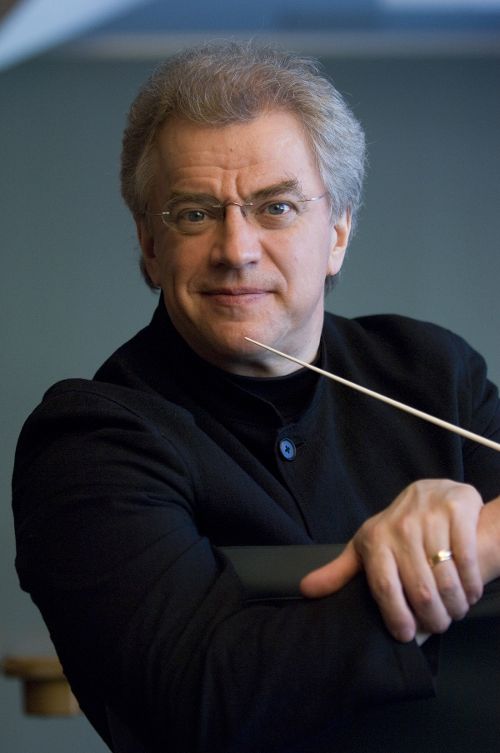Vänskä, New World Symphony soar with Sibelius

Osmo Vänskä conducted the New World Symphony in music of Grieg and Sibelius Saturday night at the Arsht Center.
Osmo Vänskä is one of the world’s most distinguished interpreters of the music of Jean Sibelius. In January the Finnish conductor led the Minnesota Orchestra (of which he is music director) in a riveting performance of his compatriot’s Symphony No. 5 at the Arsht Center.
On Saturday night he returned to the downtown Miami venue to lead the New World Symphony in Sibelius’ Symphony No. 1 in E minor. Some of the orchestral academy’s finest playing of the season and a revelatory performance reinvigorated this first symphonic essay by the Finnish nationalist composer.
Vänskä truly understands Sibelius’ distinctive voice. With a clear beat and purposeful gestures, he shaped the expansive themes and the large blocks of sonority were expertly balanced. Ran Kampel’s opening clarinet solo was finely burnished and the first string tremolo emerged with chilling intensity. Wind playing was subtly shaded and the brass playing was mellow, without becoming harsh. The prominent harp part remained clearly audible, even over the full ensemble.
In the Andante Vänskä captured the climaxes at full throttle while the quiet moments had a gentle, almost vocal quality. Rather than the thumping angularity, Vänskä’s spirited tempo in the Scherzo evoked the lightness of a dance. That made the change of mood all the more potent at the first string entrance in the finale, suggesting darkness and tragedy.
All the orchestral choirs played at peak strength with the horn section having an exceptional night. The strings really dug in for the final statement of the movement’s surging theme which was all the more effective for Vänskä’s earlier restraint. From the opening clarinet theme to the final soft string pizzicatos, the performances flowed in one long, unobstructed path and the music was richer for it.
On the concert’s first half, Garrick Ohlsson was the soloist in Grieg’s Piano Concerto in A minor. This work may be one of the most overplayed in the repertoire but Ohlsson and Vänsä proved there is no such thing as warhorses; just hackneyed performances.
Their Grieg was anything but that. Ohlsson is one of the most reliable of piano soloists. His touch is light and sensitive but he brings plenty of power to the climaxes without resorting to relentless pounding. His runs up and down the keyboard were consistently clean and he tackled the first movement cadenza with flowing musicality rather than making it a moment of shallow display.
He drew out the Chopinesque poetry of the Adagio in terraced degrees of softness. Ohlsson evoked the high stepping verve of the finale, building to a thrilling climax. Vänsä was a flexible collaborator, drawing dark luster from the strings. This freshly conceived performance revealed the score’s beauties anew.
Perhaps the loudest ovation of the season at the Arsht brought Ohlsson back for an encore he termed “too famous to announce”–Debussy’s Clair de lune, rendered with luminous tone.
New World conducting fellow Dean Whiteside opened the evening with the Helios Overture by Danish composer Carl Nielsen. This rarely heard work is a minor masterpiece that pictures the sun’s rise, full blaze and setting over the sea. The horn section’s warmth of corporate sound commanded attention right from Nielsen’s first quiet chords. Whiteside expertly coordinated the rising theme in the strings, culminating in a trumpet fanfare of great velocity. His unhurried tempo allowed fine pinpointing of instrumental detail and, in the fugal sections, individual instrumental lines were transparent.
The New World Symphony season continues with James Conlon conducting Beethoven’s Symphony No. 2 and Shostakovich’s Symphony No. 12 (“The Year 1917”) 8 p.m. March 25 and 2 p.m. March 26 at the New World Center in Miami Beach. nws.edu; 305-673-3331.
Posted in Performances
Leave a Comment
Sun Mar 12, 2017
at 12:24 pm
No Comments






